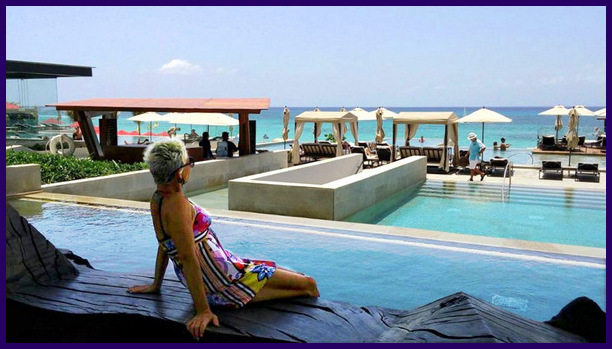 Costs for Budget Travel in Mexico 2016
Costs for Budget Travel in Mexico 2016
Overview:
In late January, 2016, I arrived in Mexico for the first time. I entered the southern end of Yucatan Peninsula overland from Belize, planning to explore the peninsula about one month.
I quickly discovered that Yucatan is a really amazing place, full of gorgeous historic Spanish colonials cities, ancient Mayan ruins in jungles, stunning beaches and incredibly varied nature. I ended up exploring Yucatan for nearly three months.
Before I got ‘stuck’ in Tulum in late March, I spent two full months visiting one amazing place after the other. I stayed at guest houses, hostels and a couple of cool hotels. I ate at local eateries (comedors) and street stalls almost entirely. I also did some grocery shopping & cooking at spacious kitchens in various hostels.
 I traveled by first class & second class buses, colectivos (vans used as public ‘buses’) and share taxis. I rented bicycles, joined a boat tour to see pink flamingos, watched amazing night-time public video-light shows, admired colonial architecture, enjoyed a variety of traditional performances and immersed myself in nature at beaches, jungles, lakes and cenotes.
I traveled by first class & second class buses, colectivos (vans used as public ‘buses’) and share taxis. I rented bicycles, joined a boat tour to see pink flamingos, watched amazing night-time public video-light shows, admired colonial architecture, enjoyed a variety of traditional performances and immersed myself in nature at beaches, jungles, lakes and cenotes.
To backtrack a moment: Before heading to Mexico, I had asked several long-term travelers I know about the costs of food, transportation, accommodation and monthly costs for budget travelers there. I was told that transportation is expensive; that you cannot eat at local shops & food stalls without getting sick; and that a reasonable monthly budget was $900-1000 US.
I’m not sure what happened with my friends’ usually reliable advise because I personally found all their information to be quite incorrect! I was able to travel on just $600 US per month without skimping on anything, eat regularly at food stalls & local places without ever getting sick, and find transportation at the same low costs as in SE Asian countries.
 In fact, I found the costs of traveling around Yucatan quite comparable to budget travel in SE Asian countries. I paid just about the same rates for accommodation, food and transportation as I normally do in Thailand or Malaysia. And my overall monthly total expenses were pretty much the same, too.
In fact, I found the costs of traveling around Yucatan quite comparable to budget travel in SE Asian countries. I paid just about the same rates for accommodation, food and transportation as I normally do in Thailand or Malaysia. And my overall monthly total expenses were pretty much the same, too.
In this post I detail my costs, giving price ranges and overall averages for accommodation, food and transportation. I also discuss other costs and expenses involved in my two month explorations of fabulous Yucatan Peninsula, Mexico.
* My $ US figures are based on an exchange rate of $1 US = $18 Mexican pesos
Total Monthly Costs:
February, 2016: $546 US / 9837 Mexican pesos
March, 2016: $668 US / 12,022 Mexican pesos
Monthly average over 2 months: $607 US
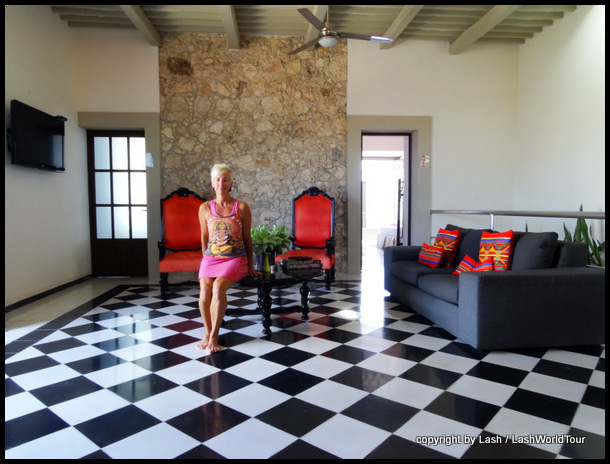 Accommodation
Accommodation
Price range I paid for dorm beds & rooms: 100-350 pesos / $5.50-19.40 US
Most common prices: 150-200 pesos / $8.30-11 US
Average nightly cost over 2 months: 175 pesos / $9.50 US
Notes:
* Mexico has many wonderful hostels! They are often set in renovated historic colonial buildings with high ceilings, huge rooms, thick walls (read ‘quiet’), beautiful architecture and interesting interiors.
Some have lush gardens, beautiful sitting rooms, swimming pools, gorgeous views of lakes or beaches and one even offers free cultural classes. Almost all hostels include free drinking water, wifi and breakfast with the bed/room price. They’re also quite safe.
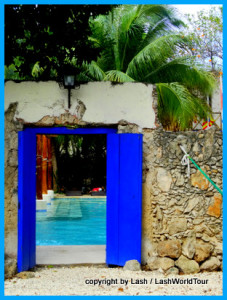 During my world travels, I generally avoid hostels like the plague. But in Mexico I was very pleasantly surprised to discover Mexican style hostels. I actually enjoyed them!
During my world travels, I generally avoid hostels like the plague. But in Mexico I was very pleasantly surprised to discover Mexican style hostels. I actually enjoyed them!
* If you are traveling with a friend or partner, you can generally find a private room for the same/nearly the same price as paying for two dorm beds. Thus, traveling in pairs really pays off when it comes to accommodation in Mexico… unless, of course, you actually prefer hostel life.
* Double rooms at budget hotels cost as little as 300-500 pesos per night / $17-27 US for two people. That may or may not include breakfast and drinking water.
* All the hostels & guest houses I stayed at in Yucatan have well-stocked kitchens. Grocery shopping and cooking for yourself could reduce your costs even more. You’ll also have to chance to eat much-needed vegetables, which are sorely missing from Mexican cuisine.
* Some hostels have female-only dorms, others offer only mixed dorms. If you’re a female traveler who prefers all-female dorms, like me, then scout around among several hostels at each destination. Most likely you can find at least one, usually for the same price or slightly higher price than the mixed dorms.
* Travel with a small padlock to use on lockers within dorm rooms. Amazingly, most dorm rooms in Mexican hostels have Unlocked doors! Wow. More surprisingly, perhaps, theft in those unlocked rooms seems pretty uncommon. BUT, be sure to lock up your valuables in the lockers provided!
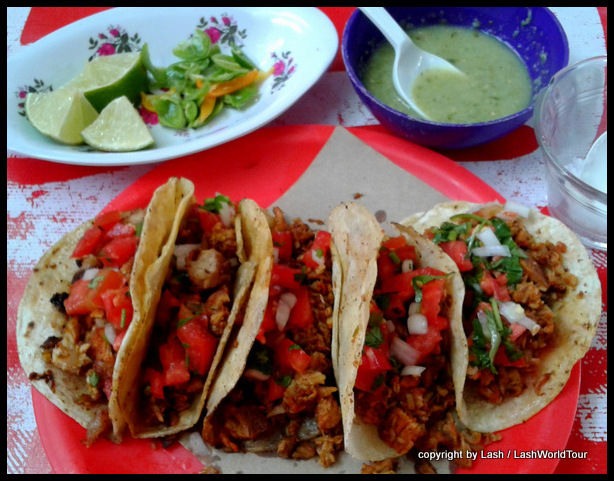
pork tacos in Campeche
Food
Price range I paid for meals at local restaurants/comedors/steet stalls: 16-55 pesos / $0.88-3 US
Most common prices: 16-25 pesos for breakfasts / 20-40 pesos for lunches and dinners / $1.10-2.20 US
Average food cost over 2 months: 98 pesos per day / $5.30 US per day
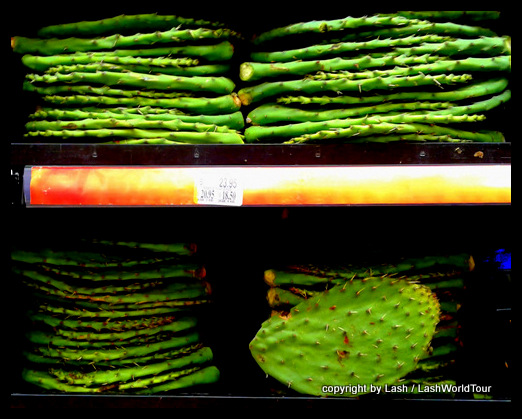 Notes:
Notes:
* I should point out that I never skimp on meals. I eat three solid meals a day as well as some snacks, coca colas, fruit and other tidbits.
* Eating this cheaply in Mexico requires that you eat almost exclusively at food stalls and local comedors – shops preparing tacos, burritos, quesadillas, tostadas, tortas, tamales and other Mexican dishes.
* If you eat at tourist restaurants or fancier local restaurants, your food expenses will double or triple. Plan on spending at least 50-120 pesos per meal. As you can see, your daily food budget would then be more like 150-360 pesos per day / $8.30-20 US per day.
* I didn’t get sick at all anywhere, from eating at local shops and street stalls. I’m a bit confused about other travel bloggers who’ve told me you can’t eat at local shops in Mexico like you can in SE Asia.
* One downside of Mexican food, in my opinion, is that it’s generally really lacking in vegetables. Many dishes consist primarily of meat/chicken and tortillas, either fried or not, and a few condiments like sauces and minced onion/tomatoes. I ended up craving vegetables pretty quickly in Mexico. Local Mexican food can also get rather monotonous.
* Whenever you have use of a kitchen (like at most hostels) you can greatly increase your vegetable intake by grocery shopping and cooking for yourself. You’ll also probably save some money and add a lot of variety to your diet.
* On the other hand, there are many interesting Mexican foods, drinks and snacks that you can try out while eating locally, if you’re adventurous.
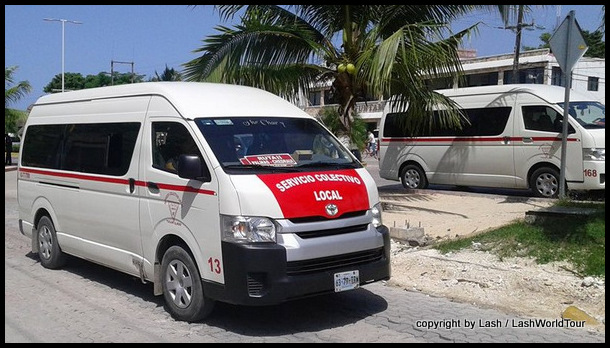
collectivo in Tulum – Mexico
Transportation
My February Total: 550 pesos / $30 US
My March Total: 1400 pesos / $77 US
For long-distance buses, colectivos & share taxis, count on paying:
for 1-hour trip: 30-60 pesos / $1.65-3.30 US
for 2-hour trip: 80-200 pesos / $4.50-11 US
Notes:
* Clearly, based on the difference in my transportation costs in Feb and March, you can see that the more you move around vs staying in one or two places, the more expensive your travels will become.
* Mexico has a very well-developed, extensive public transportation system and excellent roads. It’s very easy and affordable to travel around.
* For long trips in Mexico that run 10-20 hours, it may well be cheaper to take a plane than a bus! For example, Cancun to Mexico City overland takes about 20 hours and will cost . Depending on the season and holidays, you can find flights for a little as 600 pesos OW. The flight takes 2 hours.
* Overland, choose between 1st class & 2nd class buses, colectivos (combis), shared taxis and private taxis.
* 1st class buses are very luxurious with very comfortable reclining seats, a/c, movies or music playing and even a toilet! They are comparable to taking a flight.
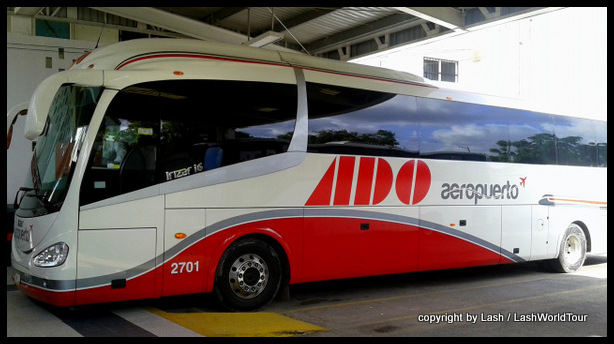
1st class ADO Bus – Mexico
* 2nd class buses are also quite comfortable, though less luxurious. The seats aren’t as plush. They use fans instead of a/c. There are no movies and no toilet on board.
* Colectivos (also called combis) – are large vans that are used a small public buses within cities and between near cities & towns. They leave when full rather than on a set schedule. They generally cost less than buses, and often run much more frequently than buses. On occasion, if few passengers present themselves, the colectivo could be canceled entirely.
* Share taxis – These are taxis that operate like combis, whereby several strangers heading to the same destination can share the taxi. The cost is set as a per-person fee, agreed upon between the driver and passengers. They operate in cities and between towns where few buses and colectivos run.
* Taxis – Taxis can be amazingly cheap in Mexico! The most astounding rate I saw was in Chetumal city. Every taxi ride within the city limits costs just 18 pesos – aka $1 US.
* You can also rent cars & motorcycles quite easily with the proper licence, I.d. And credit card. Rates are about the same as in the US.
* Some areas of Mexico have trains. I’ve never used any, so can offer any info or tips.
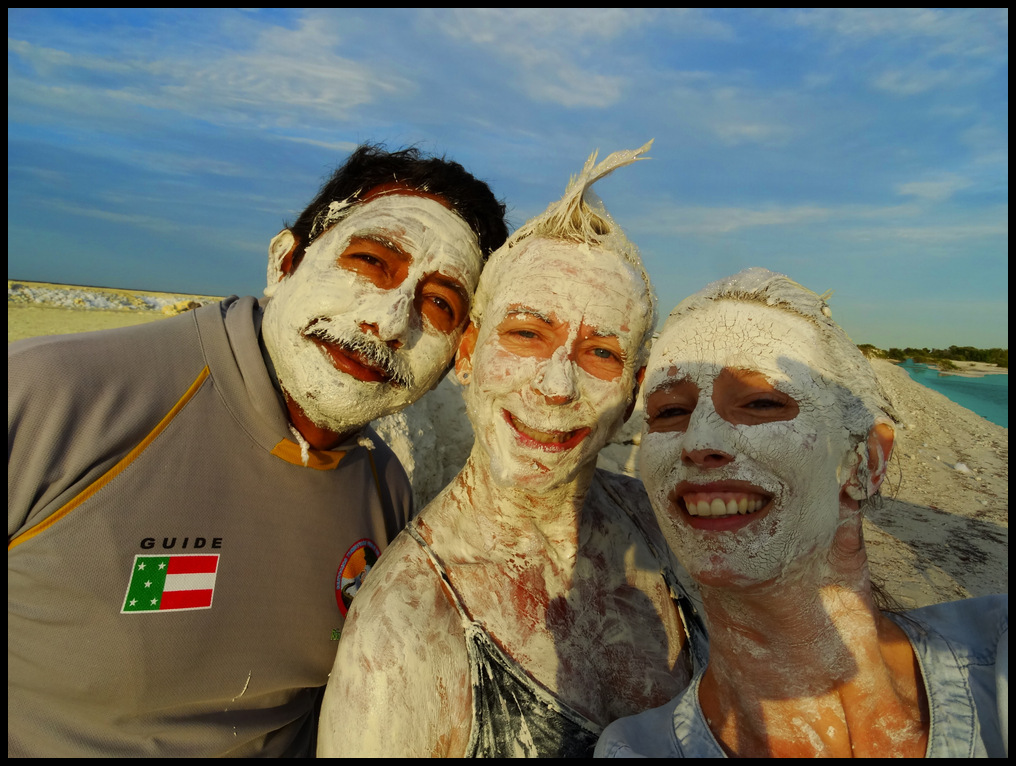 Tours and Paid Activities
Tours and Paid Activities
Boat tour of pink flamingos, salt flats and mud bath at Rio Lagartos:
– 700 pesos for a boat & guide for 2 pax. Aka 350 pesos / $19.50 US per person
– This was the only tour I joined while traveling around Mexico.
However, I rented bicycles in several locations, visited many cenotes, explored two or three Mayan ruins and went to several museums. Here are some of my costs:
Bicycle rental: 50-100 ps / $2.80-5.50 US
– The standard rate for daily rental is 100 ps / $5.50 US
Cenote entry fee: 30-60 ps / $1.65-3.30 US
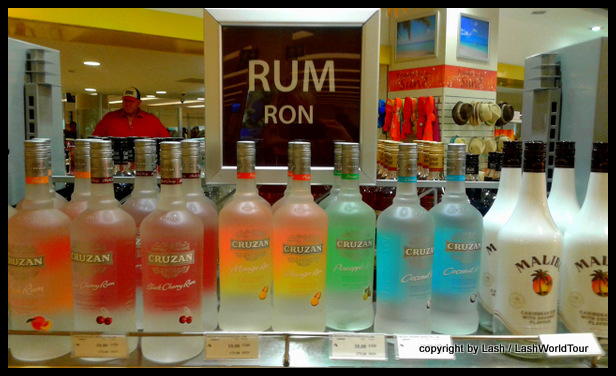 Miscellaneous Expenses
Miscellaneous Expenses
My misc costs included a Mexican sim card and prepaid phone credit, laundry, personal supplies, a few repairs, movies at cinemas, bike rentals, mosquito coils & repellent, coffee supply, espressos at cafes and a few cocktails. I didn’t total these expenses on a monthly basis. I just included them in my monthly totals.
Here are some sample prices on a variety of goods:
Telcel Prepaid Sim card: 150 pesos / $8.30 US
Monthly prepaid credit with unlimited calls & texts to Mexico, USA & Canada + 300 MB internet data: 100 pesos / $5.50 US
Load of laundry per kilo (2.2 lbs): 12-15 pesos / $0.66-0.88 US
5 L of drinking water: 10-12 Q / $1.30-1.50 US
20 L bottle of drinking water: 30 pesos / $1.66 US
(requies a deposit for the bottle of about 60 pesos / $3.35 US, which you get refunded upon return of bottle)
Bottle of coke (various sizes): 6-14 pesos / $0.33-.0.77 US
Bananas per kilo (2.2 lbs): 9-20 pesos / $0.50-1.10 US
Bag of gourmet Mexican coffee (400 gm / .88 lbs): 65-85 pesos / $3.60-4.70 US
Espresso in cafe: 25-40 pesos / $1.10-2.20 US
Cocktail: / $1.30-3.30 US
Bacardi Superior Rum at a store: 1 L = 100-130 pesos / $5.50-7.20 US
Movie at a cinema: 40-50 pesos / $2.20-3.35 US
———————–
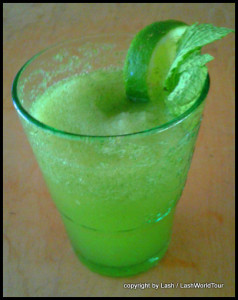 Notes:
Notes:
* Almost every hostel & guest house includes unlimited bottled drinking water. If you’re staying exclusively at such places, you should rarely need to buy water, if you’re careful to fill up daily.
* If you’re staying at a place that miraculously does not include drinking water, and if you’re staying in a location for 3 days or more, buying the 5 L bottles of water will save you a lot of money.
* If you live in a place for 10 days or more, and drinking water isn’t included, buying one of the huge 20 L of water will save you a lot of money.
* In case you didn’t note, Telcel’s prepaid sim card credit packages are phenomenally inexpensive…at least if you only need to contact people in Mexico, USA and Canada. If you need to contact people in other countries, however, TelCel is very expensive. Try to use one of the free/cheap phone apps instead – Skype, What’sApp, Line, FB Messenger. Of course, you can only use them with wifi access.
* Spirits are extremely cheap in Mexico, particularly rum & tequila. Vodkas are also quite inexpensive. Buy them at supermarkets, liquour stores and some convenience stores.
* Many laundry shops require a minimum of 4 kg of laundry, which actually brings the minimal price to 48-60 pesos / $3-3.30 US. 4 kg is a huge amount of clothes! Plan to include any of your towels, sheets, sleeping bag, etc. to reach 4 kg.
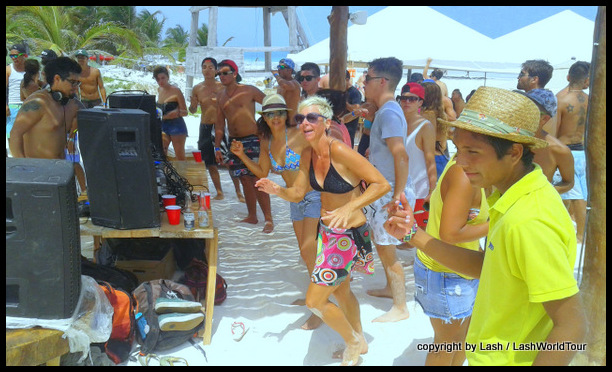
dancing at a Sunday rave party on Tulum Beach
Summary:
Traveling around Mexico on a budget cost me pretty much the same as traveling around SE Asia. Averaging just $600 US per month, I stayed primarily in hostels and guest houses, ate entirely at local eateries and food stalls, and used various types of public transportation to get around.
I ate heartily; enjoyed beautiful nature, fun activities and intriguing culture and arts; and slept at safe, clean & friendly lodgings.
Yucatan has become one of my favorite places in the world thus far. I highly recommend Mexico to other adventurous travelers, even those on a tight budget.
~~~~~~~~~~~~~~~~~~~~~~~~~~~~~~~~~~~~~~~~~~~~~~~~~~~~~~~~~
You might also enjoy:
34 Reasons I Love Yucatan, Mexico
Costs of Budget Travel in Guatemala
Costs of Budget Travel in Belize in 2016
~~~~~~~~~~~~~~~~~~~~~~~~~~~~~~~~~~~~~~~~~~~~~~~~~~~~~~~~~~












 Hi! I'm Lash, an American nomadic world traveler who's been traveling solo since 1998. I’m passionate about traveling the world nomadically and then sharing it all with you. I hope to inspire you to travel the world, to entertain you with tales from the road, and to help you reach your travel dreams. Welcome!
Hi! I'm Lash, an American nomadic world traveler who's been traveling solo since 1998. I’m passionate about traveling the world nomadically and then sharing it all with you. I hope to inspire you to travel the world, to entertain you with tales from the road, and to help you reach your travel dreams. Welcome! 




2 pings